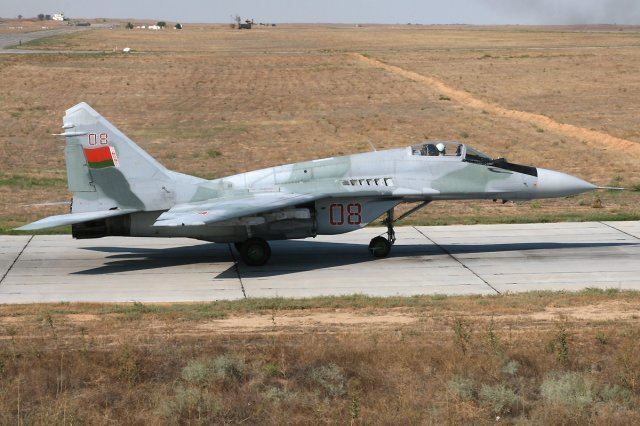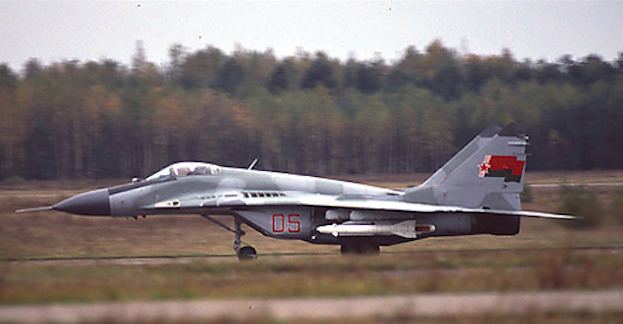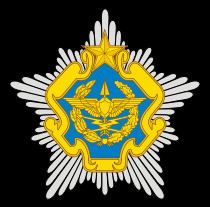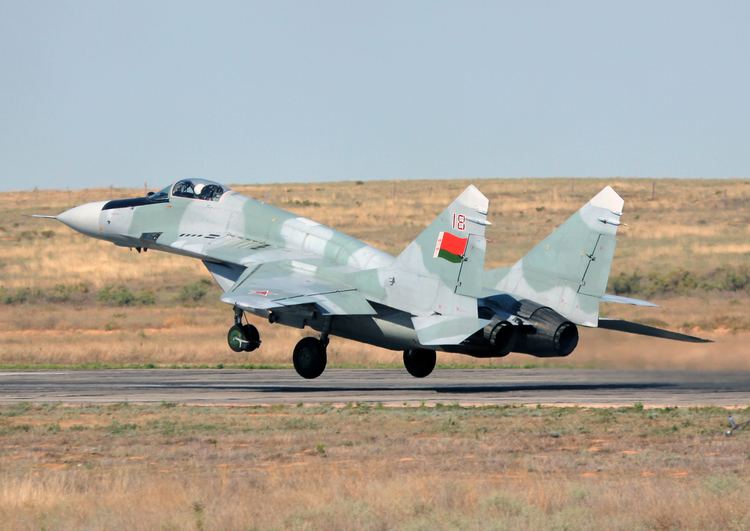Active 15 June 1992 – present | Country Belarus Founded 1992 | |
 | ||
Similar Armed Forces of Belarus, Russian Air Force, Armenian Air Force, Ukrainian Air Force, Azerbaijani Air and Air Defence | ||
Belarusian air force 2016
The Military Air Force and Air Defence Forces of the Republic of Belarus (Belarusian: Ваенна-паветраныя сілы і войскі супрацьпаветранай абароны Рэспублікі Беларусь) is the air force of the Armed Forces of Belarus, formed in 1992 from the 26th Air Army of the Soviet Air Forces which had been serving in the Byelorussian SSR.
Contents

On 5 May 1942, on the basis of the Air Forces of the Western Front, the 1st Air Army was created. By General Staff order of 10 January 1949, the Army became the 26th Air Army (ГШ ВС СССР № ОРГ 120026). In 1980, the 26th Air Army was redesignated the Air Forces of the Belorussian Military District (ГШ ВС СССР 1980 года № 314/1/00170). On 1 May 1988, in accordance with the Ministry of Defence of the USSR's Decree № 0018, the Air Forces of the District were again renamed the 26th Air Army. On 15 June 1992, by decree № 05 of the Ministry of Defence of the Republic of Belarus, the 26th Air Army headquarters became the command of the Air Forces of the Republic of Belarus.

Organization

In January 1992, the 927th Koenigsberg Red Banner Order of Alexander Nevsky Fighter Regiment (ru:927-й истребительный авиационный полк) was transferred to the Air Force of Belarus.

In 1993, the 927th Koenigsberg Red Banner Order of Alexander Nevsky Fighter Regiment was renamed the 927th Koenigsberg Red Banner Order of Alexander Nevsky Fighter Air Base Belarus.

In accordance with an edict of the President of Belarus in 2001, the Air Force, and Air Defense troops were created as one of the arms of the Armed Forces of Belarus. The VVS and Air Defense forces are intended to protect population centres such as cities and regions, as well as the administrative, industrial, economic interests of the Republic. They are also intended to defend troops from the impacts of enemy air attacks, and also against the attacks of hostile troops, as well as fire support and the guarantee of combat operations of ground forces.
In peacetime, VVS and Air Defense forces are on standby to protect the state boundary in the air and also control of Belarusian airspace.
In August 2010, the 927th Konigsberg Red Banner Order of Alexander Nevsky Fighter Air Base of Belarus (24 August 2010) was renamed the 927th Koenigsberg Red Banner Order of Alexander Nevsky Training Center and the use of unmanned aircraft systems of the Air Force of the Republic of Belarus.
The Air Force and Air Defense of the Armed Forces of Belarus are organized into six major flying regiments, including two interceptor, three strike, and a reconnaissance regiments. The air force consists of more than 18,170 personnel, though this number is being reduced. Prior to August 2010, there were 6 primary airbases: Machulishi (50th Mixed Air Base), Lida (206th Assault Air Base), Baranovichi (61st Fighter Air Base), Ross (116th Bomber-Recon Air Base), Pruzhany (181st Combat Helicopter Base), and Bereza (927th Fighter Air Base). There are 4 active airbases: Baranovichi (61st Assault Air Base), Lida (116th Guards Assault Air Base), Pruzhany (181st Combat Helicopter Base) and Machulishi (50th Mixed Air Base), now December 2011. The Air Force is responsible for all military aviation, as the Army maintains no aircraft of its own.
The Belarusian Air Force maintains close links with the Russian Air Force.
Accidents
On 30 August 2009, a Su-27 UBM aircraft crashed on the second day of the Air Show 2009 in Radom killing both pilots.
On 21 April 2010, two MiG-29 aircraft were performing an exercise when they both collided. One managed to land safely, while the other crashed.
On 23 September 2010, a MiG-29 aircraft crashed.
On 29 November 2011, a Mi-24 helicopter crashed in a small forest near the village of Novye Zasimovichi. The crew of three people was killed on impact. According to eyewitnesses, "thick fog fell the previous evening."
On 12 June 2012, a Su-25 aircraft crashed near a small village in Belarus. The pilot Nikolai Gridnyov lost control of the jet when maneuvering at low-altitude.
On 11 November 2014, a MiG-29 aircraft crashed.
Future Plans
Future plans for Belarus is to buy around 18 Su-30Ks or Su-30KN, which are already outdated, according to Russia. The return of these Su-30K (originally leased by India) to Russia cannot be kept by the Russian Air Force. However, Russia can modify the aircraft for 5 million US$ a piece and Belarus can participate in the upgrade program and receive the Su-30KN in the future.
Belarus and Russia have signed a contract for the delivery of four Yak-130 Mitten light attack aircraft to Belarus in 2015.
Retired Aircraft
After the Collapse of the USSR in 1992 Belarus had in its inventory :
